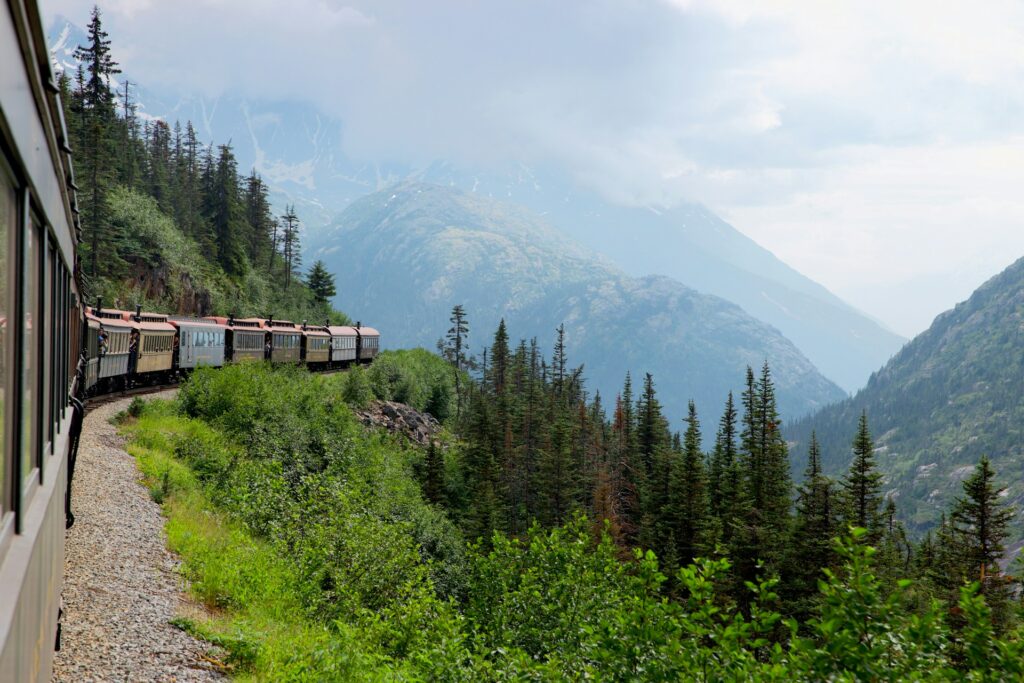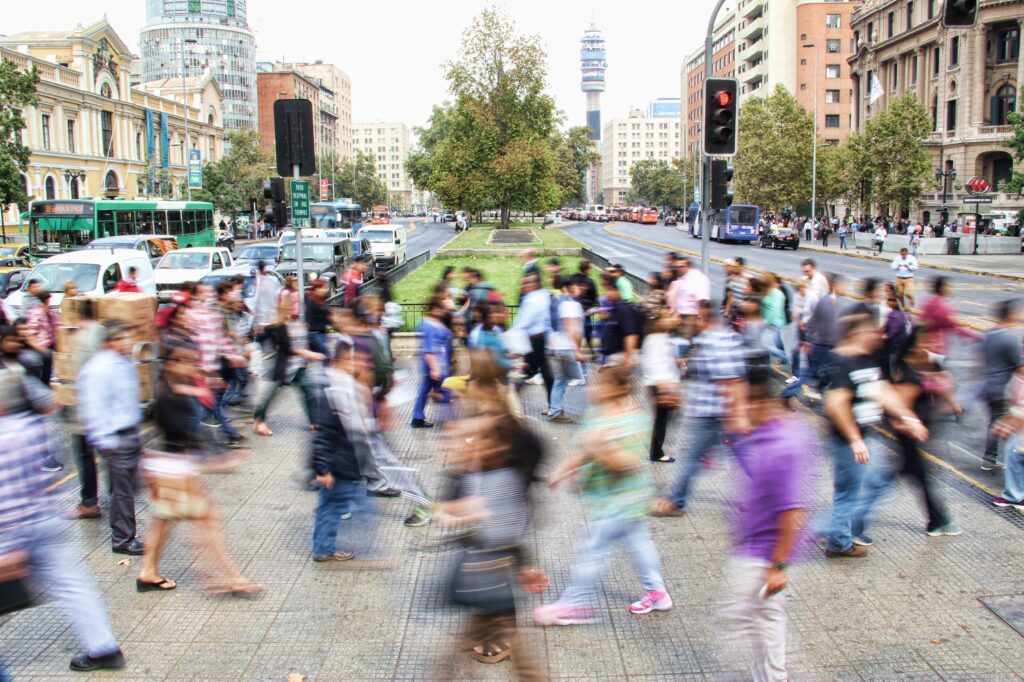Trumpets and Trials: How Nuremberg Rewrote German History
Nuremberg, a charming city in the German state of Bavaria, holds a significant place in world history due to its multifaceted role in various historical events and periods. From its medieval origins as a prominent trade center to its pivotal role in the rise to power of German National Socialism (aka the Nazi party) and subsequent post-war trials, Nuremberg’s history is a tapestry of political, cultural and social significance.
We had the pleasure to speak Werner Fiederer, an expert guide in Nuremberg from the city’s Institute for Local History and this week’s Insightful destination expert. He tells us more about the city’s fascinating past, and why it is such an important and interesting destination.
Take a read then test your knowledge with this week’s Insightful Travel Trivia, with 5 questions inspired by Werner.
Visit Nuremberg for yourself, as an optional experience, on our Best of Germany premium tour
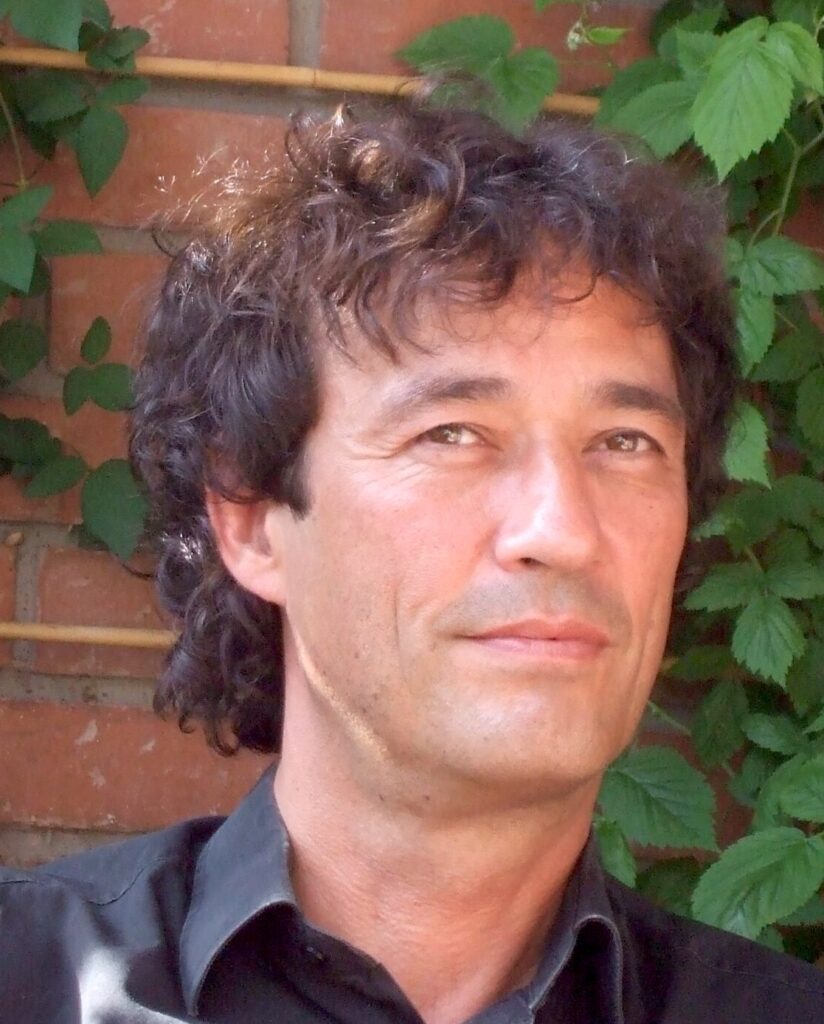
Why is Nuremberg such an important and interesting city?
“Nuremberg is one of the most interesting cities in Germany, with a diverse and interesting history, a lot of which can still be seen,” says Werner. “92% of the city was destroyed in World War II, so it’s even more interesting and impressive how much medieval character is still intact. Nuremberg is also unique as one of the few places you can still see architectonical relics of National Socialism of the 1930s, such as the Zeppelin grandstand or the Congress Hall.
“The city began life as a vitally important trade center. It played not only a very pivotal role during the period of National Socialism and the rise of the Nazi party, but also afterwards. When World War II was over, the city was chosen as the site for the famous Nuremberg trials. It was here, that the principal criminals of World War II were put on trial by four allied nations – the United States, Great Britain, France and the Soviet Union.”
You may also like: Experience the best of Germany’s past, present and future in 12 days
A symbol of National Socialism
It was during the 20th century, that Nuremberg’s history took a darker turn. The city became a symbol of Nazi power, hosting the annual Nuremberg Rallies, massive propaganda events that showcased the regime’s self-image and ideology. The infamous Nuremberg Laws, which institutionalized racial discrimination against Jews and other minorities, were announced in the city in 1935, during one of the rallies.
“Before the war started in 1939, Nuremberg was sort of ‘model city’ for the National Socialists,” Werner explains. “It was one of the most important sites for them in terms of propaganda, and also in terms of showing the self-image of the Nazis to the Germans and to the rest of the world.”
Bookmark for later: Making Time: Meet One of Germany’s Artisan Cuckoo Clock Makers
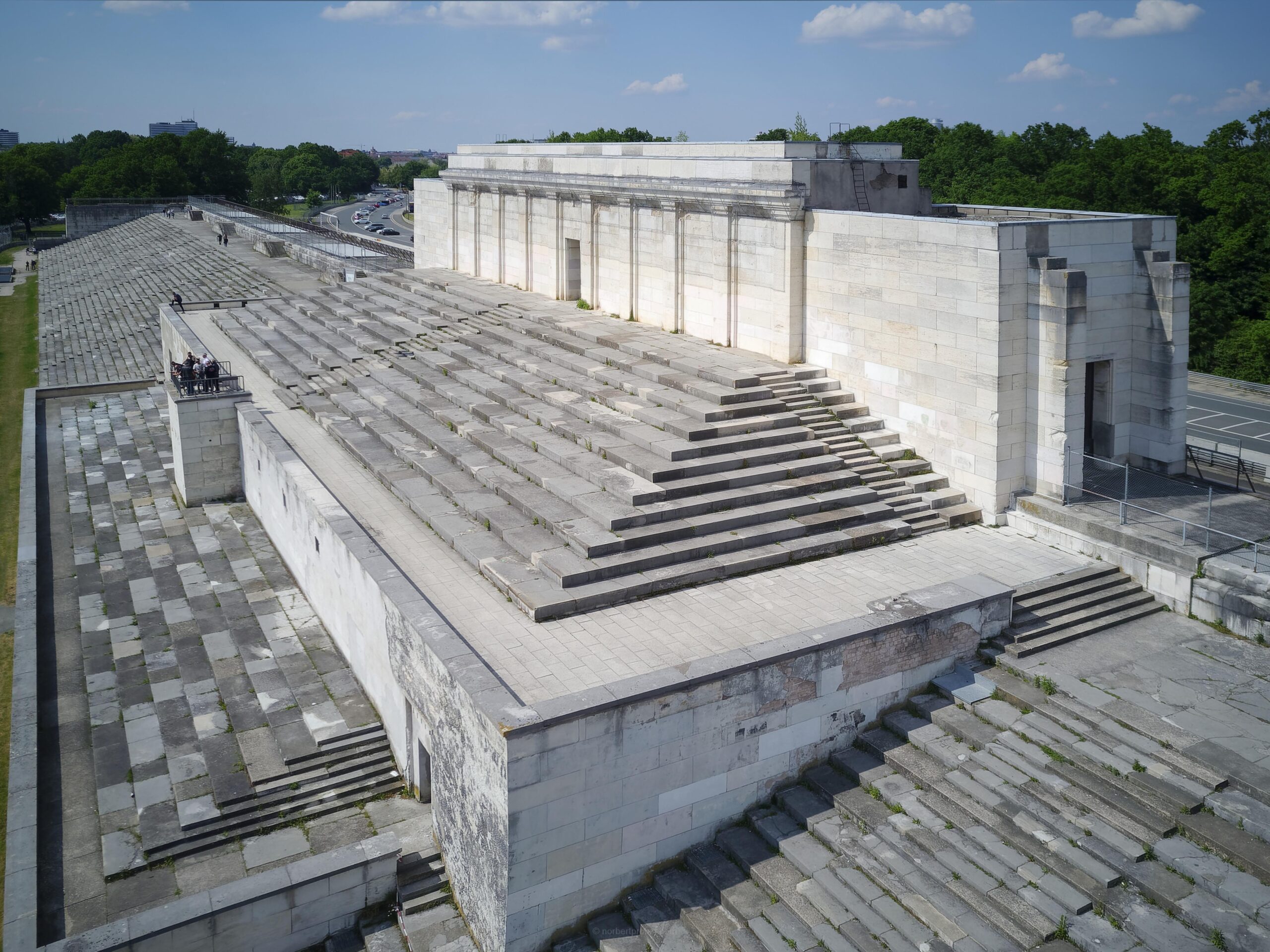
The Nuremberg Rally Grounds
“The Nuremberg Rally Grounds are one of the most visited sites in Germany when it comes to World War II history,” Werner continues. “You can see some of the huge buildings that were erected in the 1930’s to serve the Nazis propaganda plans and wishes. Guests are often very emotionally affected.
“Nuremberg was chosen by the National Socialists to become the site for the propaganda rallies. A huge area was designed by Albert Speer, Hitlers Chief Architect. The Zeppelin Grandstand and the Congress Hall are still standing today as a relic from this period.”
The grandstand was built of limestone and bricks and is 360m wide. In front of it was a large terrain surrounded by stands for 60.000 spectators. The Zeppelin field itself was bigger than 12 soccer pitches and held 100,000 spectators. Today, much of the foundations and layout still identifiably conform to the original architectural plans.
If you are interested in the history of war: Tunnel of Hope: a Survivor’s Story of the Bosnian War
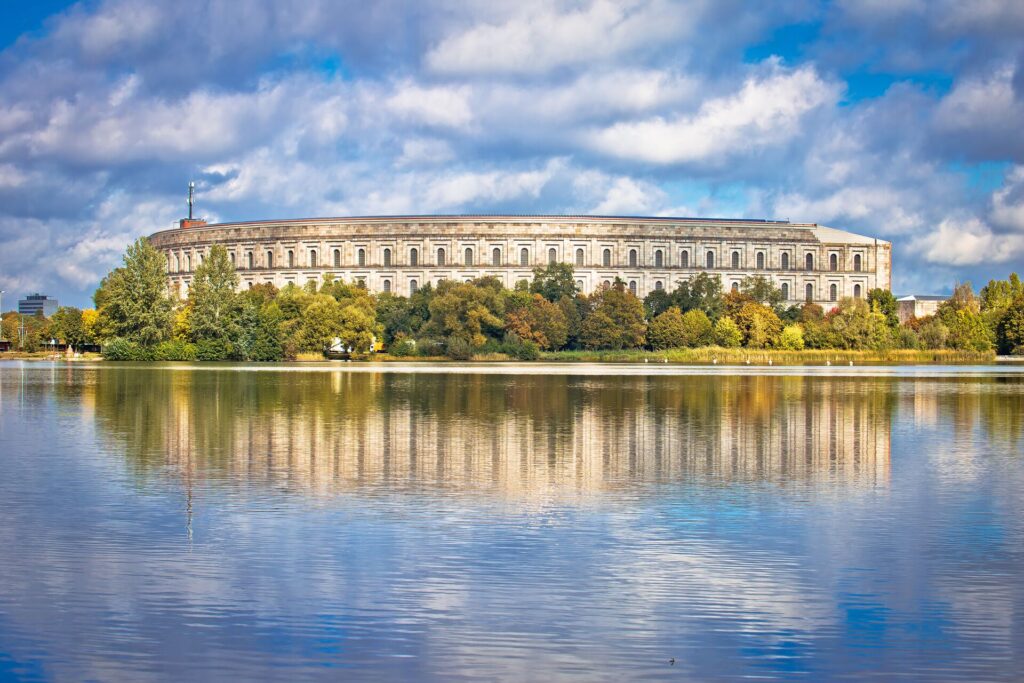
Congress Hall
“You can also see the enormous Congress Hall,” Werner says. “This was designed to be the site for a speech from Adolf Hitler to 50.000 members of the party congress, however, it was never completed. For over 20 years now, it has housed the Documentation Centre, an incredibly important exhibition and education center.”
The Congress Hall is the only part of the entire rally grounds which was not designed by ‘Hitler’s architect’ Albert Speer. Since 1973 the building has been officially protected as the largest example of National Socialist architecture. Since 2001 it hosts the Documentation Centre with the permanent exhibition “Faszination und Gewalt” (Fascination and Terror).
Until the end of 2025 the Documentation Center is being renovated. Until then, there is an interims exhibition presented in one of the large halls of the Congress Hall.
Read more about Bavaria: The Rhine Valley: Romance and Relaxation in the Heart of Germany
Save up to $3,000* per couple on your first Premium Tour
Plus receive latest offers, travel inspiration, and discover how your travels will make a positive impact. Together, WE MAKE TRAVEL MATTER®. Subscribe NowThe Nuremberg Trials
Additionally, Nuremberg was chosen as the site for the post-World War II Nuremberg Trials, where Nazi leaders were held accountable for their war crimes and crimes against humanity. Held from 1945 to 1946, the trials were a landmark event in international law, establishing the principles of individual responsibility for crimes against humanity and laying the groundwork for future international criminal tribunals. The trials also marked a significant moment in the city’s history, as Nuremberg transitioned from being a symbol of Nazi power to a symbol of justice, human rights and accountability.
For an intriguing WW1 tale: The Legend of The Golden Virgin, France’s Most Important Statue
A city chosen for practicality
Rumor has it that the Allies chose Nuremberg to host the trails to take revenge for the Nazi period, however Werner tells us that the city was chosen for more practical reasons. “First of all, the city had a huge courthouse that was still standing from the war. No other big city had had this opportunity,” he explains.
“In addition, attached to the courthouse there’s a huge jail. So, it was possible to bring the defendants from their prison cells to the courtroom and back without leaving the area. Last but not least, the USA was mostly the driving force for this trial and Bavaria, where Nuremberg is, was part of the US’s occupation zone. So, they really had interest to hold the trials in their occupation zone.
If you love Germany, you should read: Georg Lang: The Visionary Who Revolutionized Munich’s Oktoberfest
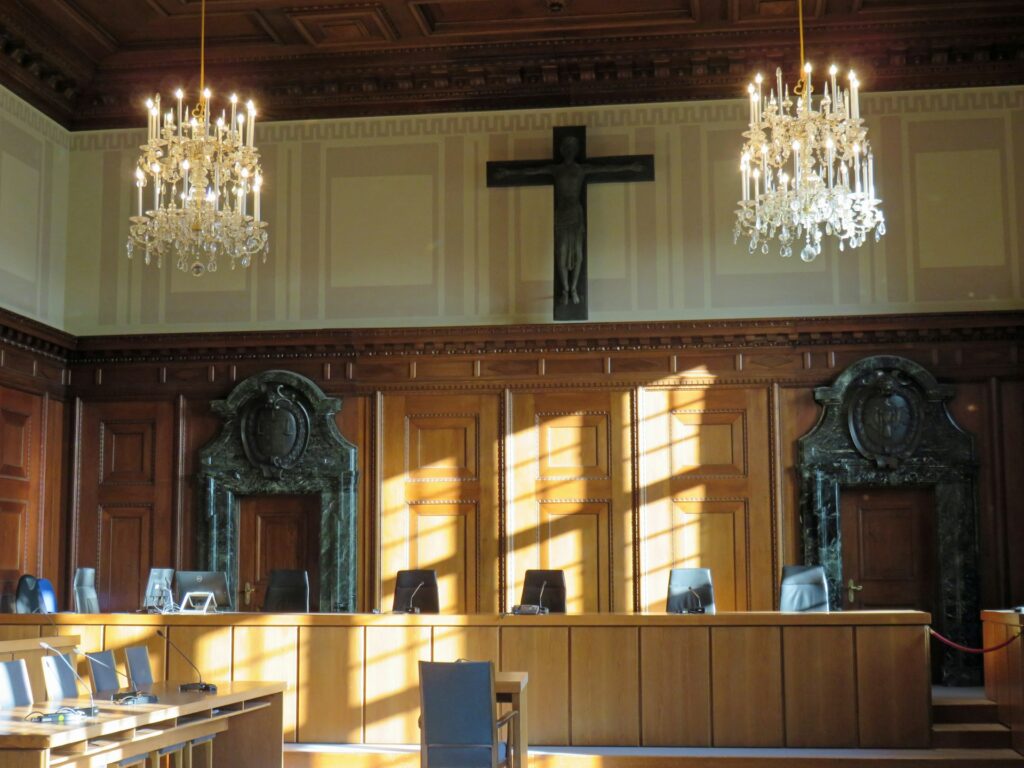
Courtroom 600
“You can still visit Courtroom 600, one of the most famous courtrooms in the world,” says Werner. “For visitors it’s a very emotional moment to stand in the same room where Hermann Göring, Rudolf Hess and all these Nazi leaders were sitting.
“You don’t see the room as it was in 1945 when they held the trials there though. When the courthouse was given back to the German authorities, they changed it back to how it looked in 1916 when it was erected.
“It was still used as a courtroom until two years ago and is now a museum. It’s open for the public (every day except Tuesdays) with a lot to see, including an excellent exhibition called Memoriam Nuremberg Trials.”
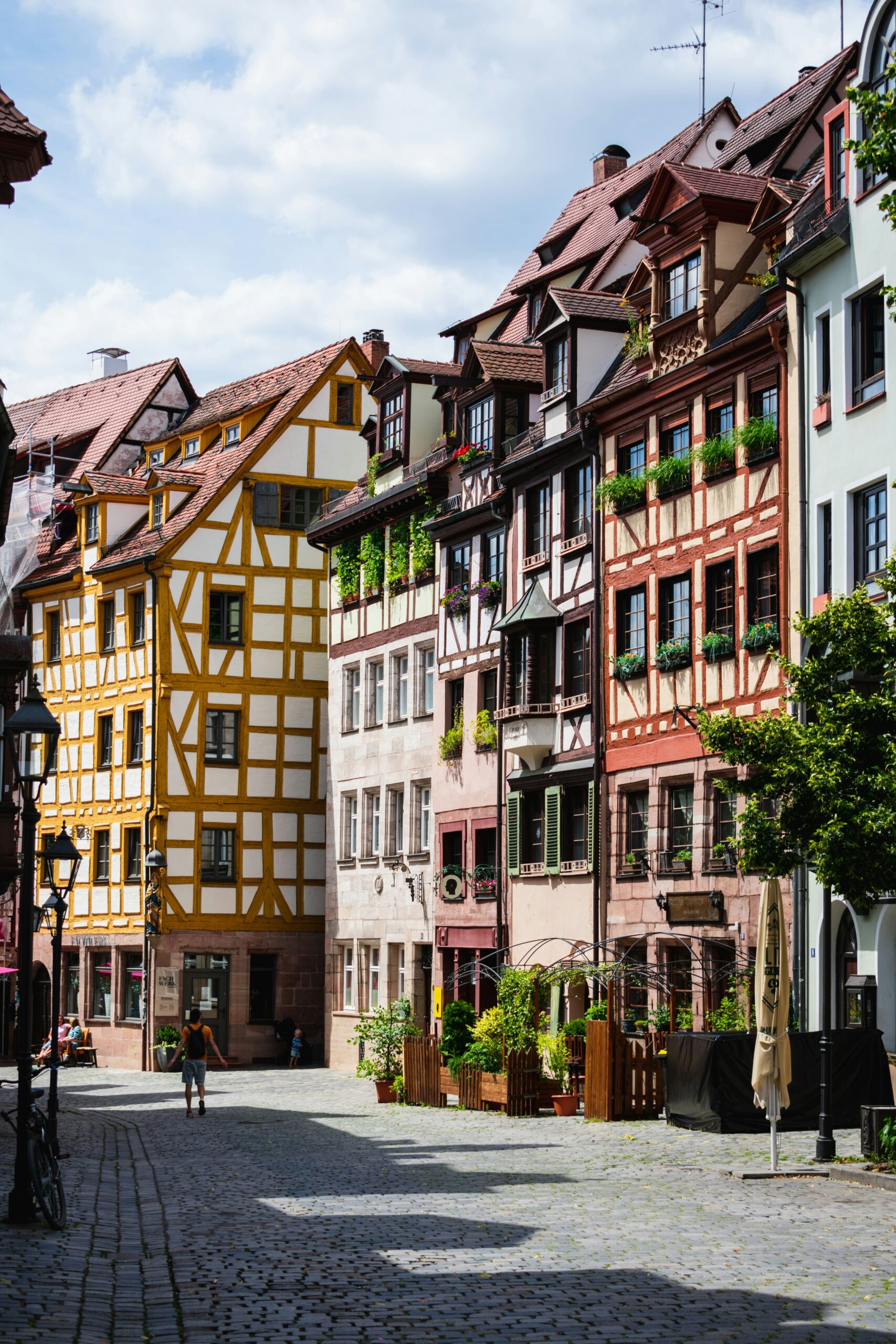
Of huge political importance, for over 500 years, Nuremberg’s medieval castle was home to every emperor of the Holy Roman Empire.
Medieval Nuremberg – a merchant stronghold
“It’s not only the Nazi period that makes Nuremberg interesting,” says Werner. “The majority of our visitors enjoy exploring the city’s medieval history and relics. Located on the crossroads of the most important trade routes of Europe, it was one of the most important merchant cities of that time.”
The city’s strategic location along major trade routes in the Holy Roman Empire meant that Nuremberg became a hub for commerce, particularly in textiles, metals and crafts, and its annual trade fairs attracted merchants from across Europe. The economic influence of the city extended into the Renaissance, becoming a center of artistic and intellectual activity, producing renowned figures like Albrecht Dürer, a leading artist of the Northern Renaissance.
“We still have one of the most famous medieval castles atop the city,” says Werner. “Impressive and well preserved, it played an enormously important political role in the Middle Ages. You can also enjoy the mediaeval town with Albrecht Dürer’s house, impressive Gothic churches from the 13th and 14th centuries and the beautiful mediaeval center.”
You may also like: The German Town of Rothenburg is a Grown-Up Christmas Grotto
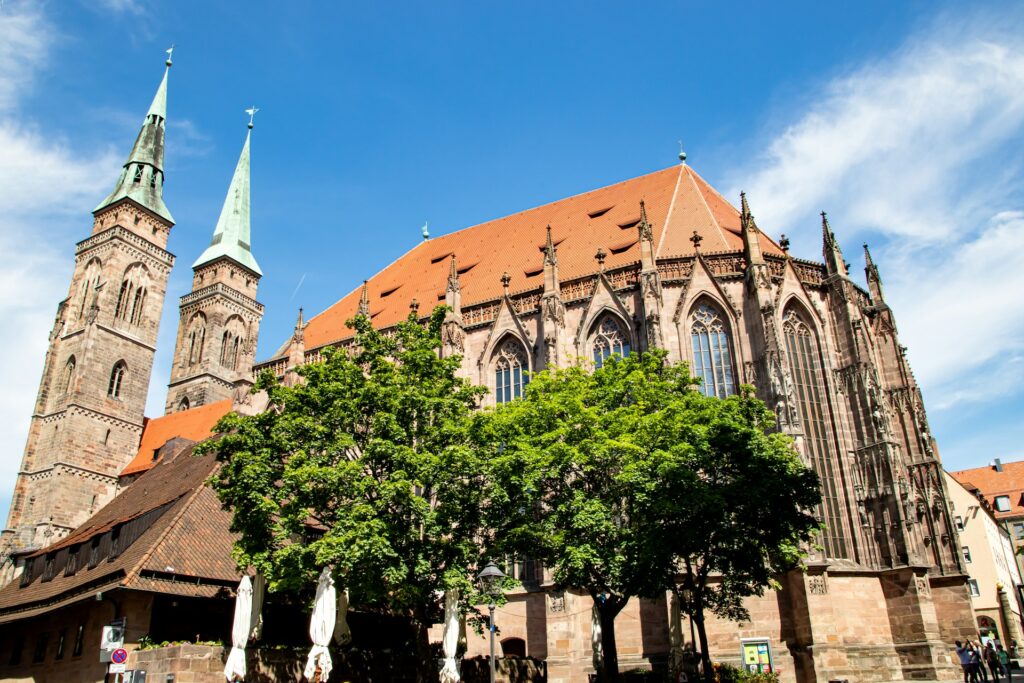
A center of political power
“As well as economic power there was also a lot of political meaning and power in Nuremberg.” Werner explains. “This was the city where all the German Emperors and Kings regularly held their most important meetings, along with the rest of the nobility. The so called Reichstag (imperial diet) of Nuremberg was hugely influential during medieval times.
“This connects us again to the Nazi period, because the ‘Reichstag’ of that old tradition was also one of the reasons that Hitler wanted the “Reichsparteitag” (party rally) to be held in Nuremberg, leading to the building of the aforementioned Congress Hall, to connect to the medieval tradition.
A city of historical contrasts and connections
“There are so many elements that are connected together here in the city,” says Werner. “The contrasts between that history and the modern architecture is obvious. The stories are just as fascinating. As a guide, I never tire of sharing these with our visitors.
“It’s this mixture and historical contradictions, which makes Nuremberg so fascinating. The modern and terrible WWII history and its results. The wounds that it left in the city and the scars. And then this period after the War when the court trials put another light on the city and gave Nuremberg a new reputation. From the Nazi city to the city of international justice, that was a great leap forward.”
Explore Bavaria and visit Nuremberg for yourself, as an optional experience, on our Best of Germany premium tour
LIKED THIS POST? SHARE WITH YOUR COMMUNITY

